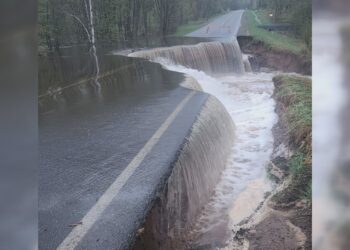The winter of 2022-2023 was a snowy one. Total snowfall is now at 232.6 inches. The long-term average at the National Weather Service (Negaunee Township) is 196.4 inches. This winter’s snowfall on average was the most since 2008-2009 when 246 inches fell.
This winter had four major snowstorms of a foot or more at the NWS office. The heaviest one-day snowfall was 20 inches on February 23. The deepest snow cover was 44 inches on April 1. The long-term average maximum snow cover is 37 inches.
There could conceivably be more snow– it’s happened before this late– but the chances of significant snowfall dwindle by the day during late April into May.
The outstanding climate feature of the past winter was warmth. Each winter month– December, January, and February– was above average. December was only 0.3° above average. However, January was a balmy 7° above normal, while February was nearly 4° above the long-term February standard. March came in below average, but only by 0.4°.
There were only 12 days with low temperatures zero or below zero this past winter. The long-term average is 33 days. Only the winter of 2011-2012, with 10 days, and the winter of 1997-1998, with 11 days, had less. The coldest low temperature this past winter was -11° on January 31.
Looking way ahead, the NOAA initial summer outlook puts Upper Michigan in the “above average” category for temperature. We are barely in the above-average temperature region, so that implies we may not be exceptionally warm, unlike last summer 2022.


















